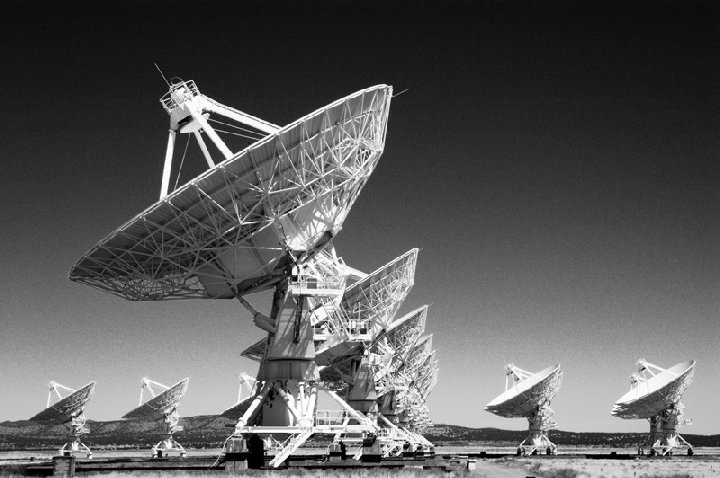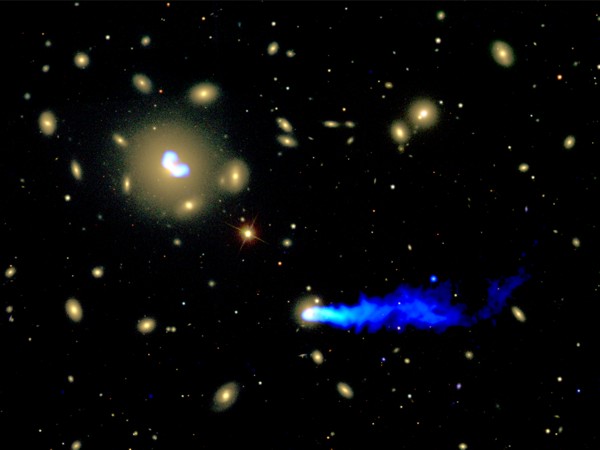Very Large Array
The Very Large Array (VLA) is located on a desert mesa in New
Mexico, USA. It consists of 27 radio antennas, each 25 meters in
diameter, arranged in a "Y" pattern and together approximating
a much larger single radio antenna.

Web Site: http://www.vla.nrao.edu/
(Image credit: Courtesy of NRAO/AUI and Photographer John Littell.)
Lead Investigator: Neal Miller
Radio emission from galaxies is a signature of either accretion of material onto a massive black hole or the formation of young stars. The long wavelengths of radio emission are not affected by the dust which is often present in galaxies, and therefore such observations provide a valuable method to identify active galaxies in the Coma cluster. The locations of such galaxies may then be used to explore the role of the cluster environment on the evolution of galaxies.
Through a 25-hour program we have obtained the deepest images of the Coma cluster at the radio wavelength of 20 centimeters. The VLA data identify numerous galaxies with active central black holes, often manifested through large outflowing jets and lobes of strong radio emission (see below). At fainter levels of radio emission, the VLA data are able to identify galaxies which are converting gas into stars at rates as small as 10% the mass of the Sun each year. In conjunction with the Hectospec data, we will be able to construct the deepest radio luminosity function ever derived for a galaxy cluster.
 Image credit: Courtesy of NRAO/AUI and Neal Miller.
Image credit: Courtesy of NRAO/AUI and Neal Miller.Radio emission (depicted in blue) arising from accretion onto the massive central black holes of galaxy NGC 4874 (upper left) and NGC 4869 (lower right).
